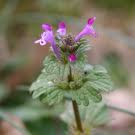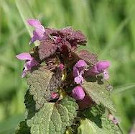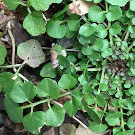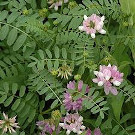4–6 minute read
Routine Care
mulching
To stimulate plant growth once cold snaps are past, rake mulch away to allow the soil temperature to increase. When plant growth has begun, return mulch to a depth of about 3 inches, keeping it away from plant crowns.
tidying
Remove mulch and leaves around hellebores to let seedlings grow. Seedlings are best transplanted now, not later in spring.
watering
Water newly-installed or evergreen plants if weather conditions have been dry
- Choose warm days for watering, because plants cannot take up water if the ground is frozen.
- Water retains heat, so watering just before a cold snap can help plant roots survive bitter temperatures. </li>
houseplants
- Let your houseplants rest. Most are semi-dormant in the short days of winter, needing less water and no fertilizer. The major causes of houseplant deaths during winter are over-fertilizing, over-watering or under-watering, and improper light.
- Watch for indoor insect pests. Most can be controlled easily with insecticidal soap.
Special tasks
bulbs
Fertilize spring-flowering bulbs to help fuel next year’s flowers. Spread a balanced fertilizer such as 10-10-10 around the new shoots when one inch of growth is visible, using one rounded teaspoon per square foot.
planting & Propagating
Because most plants are still dormant, February is the best time for spring planting, transplanting and division. Root repair is slow when the soil is cold, but there is plenty of time for roots recover before top growth begins.
- Plant perennial groundcovers, trees and shrubs.
- Divide perennials that bloom in late summer or fall as the tips emerge. Perennials that bloom in spring or early summer are best divided in autumn. If you still want to divide hostas in the spring, wait until the first flush of leaves has hardened.
- Because roots are not yet bound to the soil, mulch to prevent heave-thaw and stake tall plants to avoid rocking, which tears roots.
- Water when the soil is dry, because new foliage is easily dessicated before roots recover.
- Take hardwood cuttings of many landscape plants like crape myrtle, forsythia, holly, hydrangea, juniper, flowering quince, spirea, and weigela.
pruning
| Jan | Feb | Mar | Apr | May | Jun | Jul | Aug | ||||||||||
|---|---|---|---|---|---|---|---|---|---|---|---|---|---|---|---|---|---|
| TREES | |||||||||||||||||
| shade | |||||||||||||||||
| bleeder | small branches | ||||||||||||||||
| fruit | |||||||||||||||||
| SHRUBS | |||||||||||||||||
| summer-blooming | after bloom | ||||||||||||||||
| spring-blooming | after bloom | ||||||||||||||||
| broadleaf EG | dieback | ||||||||||||||||
| needle EG | |||||||||||||||||
| HERBACEOUS | |||||||||||||||||
| grasses | |||||||||||||||||
| flowers | pinch, deadhead | ||||||||||||||||
- Trim ornamental grasses and evergreen perennials like liriope, mondo grass, hellebores and epimediums. Note that sedges resent pruning — just comb out dead foliage with your fingers.
- Renew summer-blooming deciduous shrubs by removing ⅓ of the branches of fast-growing shrubs or ⅕ of the branches of slow-growing shrubs. Prune to open the interior to light and air. Do not prune spring-blooming shrubs until after they bloom or you will remove this year’s flowers.
- Remove diseased, dead or undesired tree branches, water sprouts and any crossing limbs.
problems
weeds
For common weeds not mentioned below, try this weed gallery. You can check for the toxicity, groundwater risk and persistance of many weed products in Toxicity of Lawn Chemicals.
- Watch for winter annual weeds. Remove by hand or apply a selective post-emergent when the temperature is above 40° all day long. These are most effective when weeds are actively growing.
- Treat perennial weeds such as wild onion and wild garlic with a broadleaf herbicide when temperatures are above 50°. Be careful to distinguish mock strawberry, an invasive alien, from our native barren strawberry.
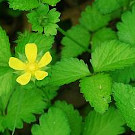 weed mock strawberry
weed mock strawberry wildflower barren strawberry
wildflower barren strawberry - Control invasive vines and unwanted tree saplings.
- For saplings that are too large to pull, cut off close to the ground and clear away debris. Immediately paint or spray the exterior and the cut surface with a 15–25% solution of glyphosate --- waiting more than 5 minutes can prevent absorption. For a larger stump, only the outer two-thirds is live wood and needs treatment.
- English ivy control differs by season. In fall, hand-pull vines and re-visit periodically to remove any residual new growth. In spring, hand-pull or use herbicide.



